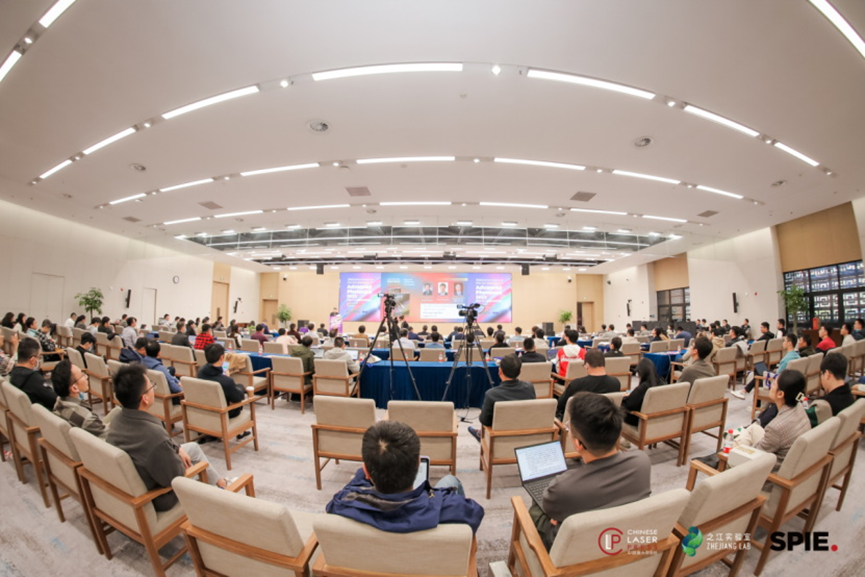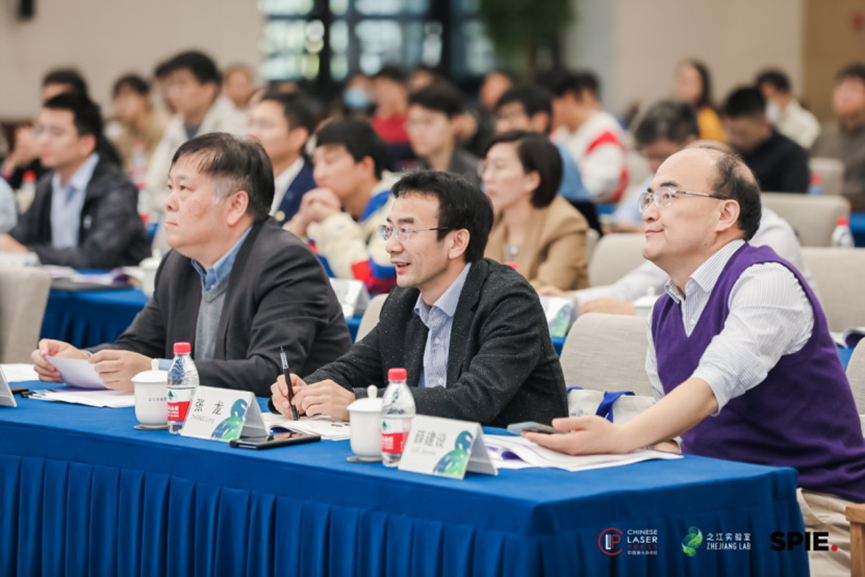

On November 23, 2022, the three-day SPIE-CLP Conference on Advanced Photonics 2022 was successfully concluded. The conference was jointly held by Zhejiang Lab, SPIE (the International Society for Optics and Photonics), and CLP (the Chinese Laser Press). Scientists and researchers from home and abroad in related fields such as biophotonics, laser and nonlinear optics and nano-optics were invited to join online and offline to share academic achievements and discuss the frontiers of optics.
On November 22, 2022, the main offline forum was opened at ZJ Lab. Ms. GU Ying, academician of the CAS, Mr. ZHU Shiqiang, President of ZJ Lab, Mr. Anatoly ZAYATS, professor of King's College London, Mr. ZHANG Long, Vice Director of SIOM, and Mr. YUAN Xiaocong, professor of Shenzhen University, attended the conference and delivered speeches.
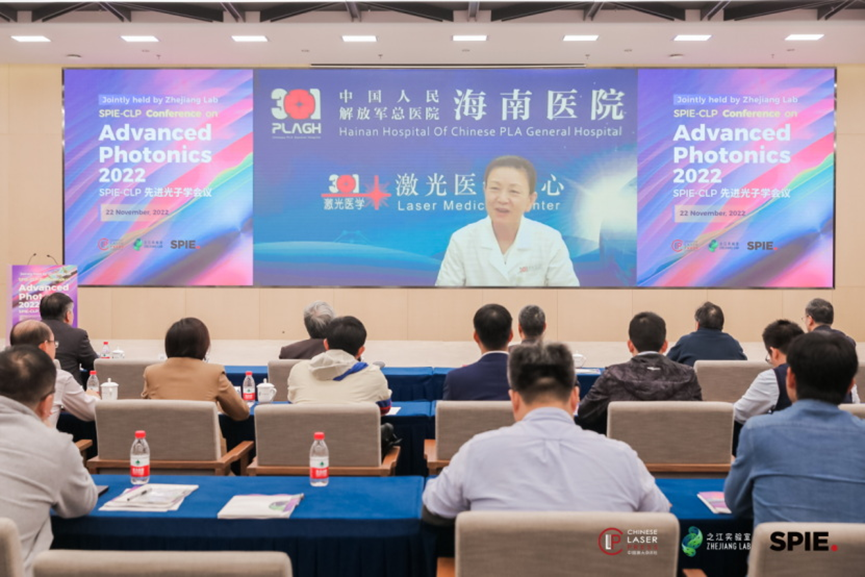
According to Ms. GU, the research and achievements in photonics have solved many difficult problems in biology and medicine, and the optical means can help reveal the mystery of human life, study the mechanism of disease occurrence and develop new treatment methods. Cutting-edge technologies such as advanced endoscopic technology, photoacoustic imaging and photodynamic therapy have been widely used in the medical field. At the same time, the development of medicine and biology has put forward new requirements and challenges for optical research. In the future, the cross-fertilization of multiple disciplines such as photonics, medicine and biology will continue to bring great benefits to human society.
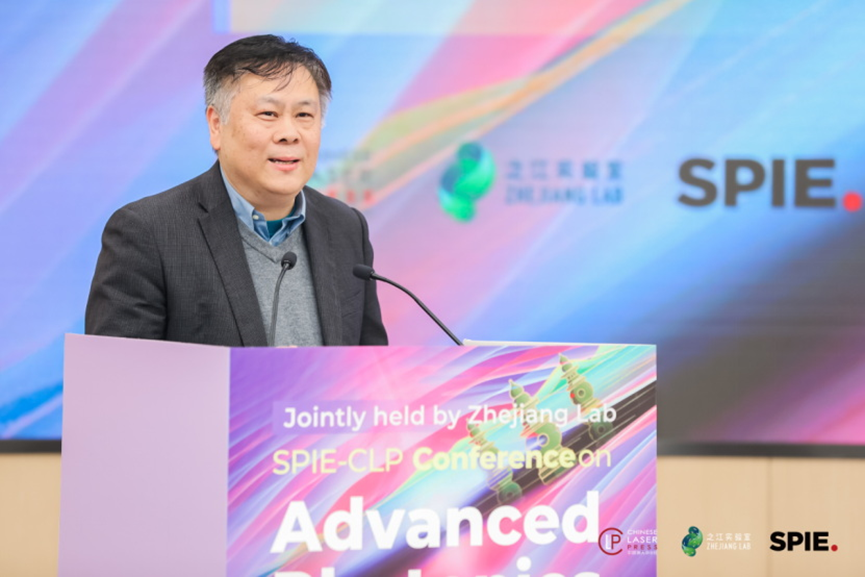
Mr. YUAN introduced the journal Advanced Photonics inaugurated in 2019 and its sister journal Advanced Photonics Nexus. Both journals have received wide support and attention at home and abroad since their inauguration. Mr. YUAN hoped that the journals could achieve more brilliant achievements in the future and further enhance their international influence.
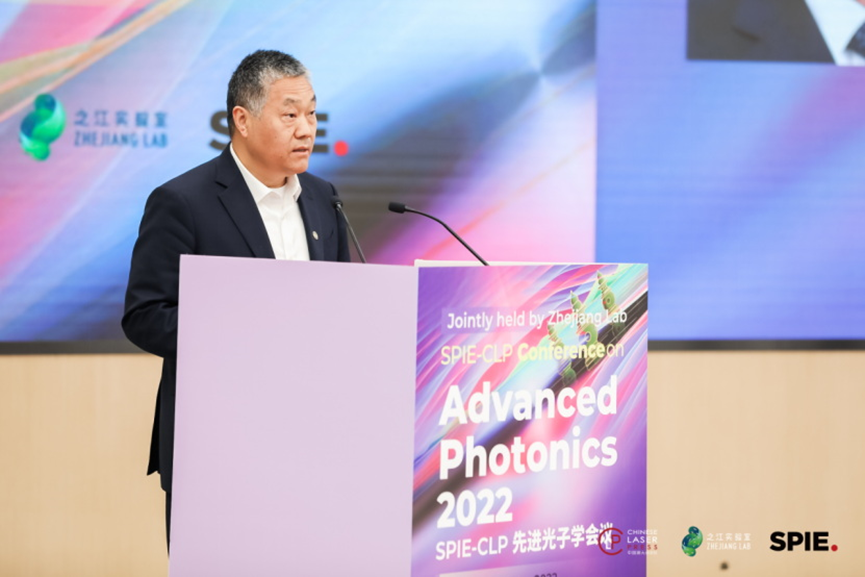
According to Mr. ZHU, innovative applications based on photonic technology have spurred a boom in multiple fields ranging from medicine, energy, chemical engineering to biology, and have become an important segment in advanced manufacturing and a high ground in global competition. Focusing on the research field of cutting-edge photonics, ZJ Lab is exploring to address the technological challenges of integrated and intelligent optoelectronics, and launching projects in various aspects such as ultra-weak force measurement facility, major sci-tech infrastructure for multidimensional intelligent sensing hub, high-throughput nanolithography, medical endoscopy, etc. In the future, ZJ Lab will further strengthen the exchange and cooperation in photonic technology, continue to promote scientific research, strive to achieve major breakthroughs, contribute to the advancement of global photonics research and serve the major national demands.
This conference is based on four themes, namely biophotonics, laser and nonlinear optics, nanophotonics and optical computing, and sensing and imaging, and invited four well-known scholars from home and abroad, including Mr. WANG Jianyu, academician of the CAS, Prof. LIU Xu, Director of the Institute of Intelligent Sensing of ZJ Lab, Prof. Demetri PSALTIS from École Polytechnique Fédérale de Lausanne, and Prof. Andrew FORBES from the University of the Witwatersrand, to deliver keynote speeches at the plenary session, and 72 experts to deliver invited reports.

Citing the important applications of single photon detection and other technologies in space quantum communications and quantum secret key distribution on the Micius Satellite, Mr. WANG recounted the important contributions of optoelectronics technologies in aerospace and aviation and other fields, and fully affirmed China's continuous development in the field of optoelectronic science and technology in recent years. He pointed out that the global optoelectronics industry was still in the "adolescent" stage of rapid growth, and China's young researchers should continue to work hard to keep the lead in the dominant field of optoelectronics and make up for the shortcomings in the lagging field, so as to quickly put us on a par with the world's advanced level.

Prof. LIU gave a keynote speech entitled "High throughput direct laser writing 3D nanolithography", introducing his team's work on the new technology of multi-channel edge-light suppression lithography. His team has developed a full set of key technologies including high-throughput parallel direct writing technology, high-precision super-resolution focal spot modulation technology, edge-light suppression photoresist technology, high-performance control system and software, which significantly break the limit of optical diffraction and achieve sub-30nm feature size and sub-100nm periodic structure. At the same time, the team has solved the problems of low efficiency of single-channel lithography and poor stability of lithography caused by beam fluctuation, and realized parallel lithography method with more than 6 beam channels, with maximum single-channel direct writing speed up to 7m/s and large area lithography capability (above 4"). The method is expected to provide powerful means of production of next-generation optoelectronic hybrid integrated chips and other devices.
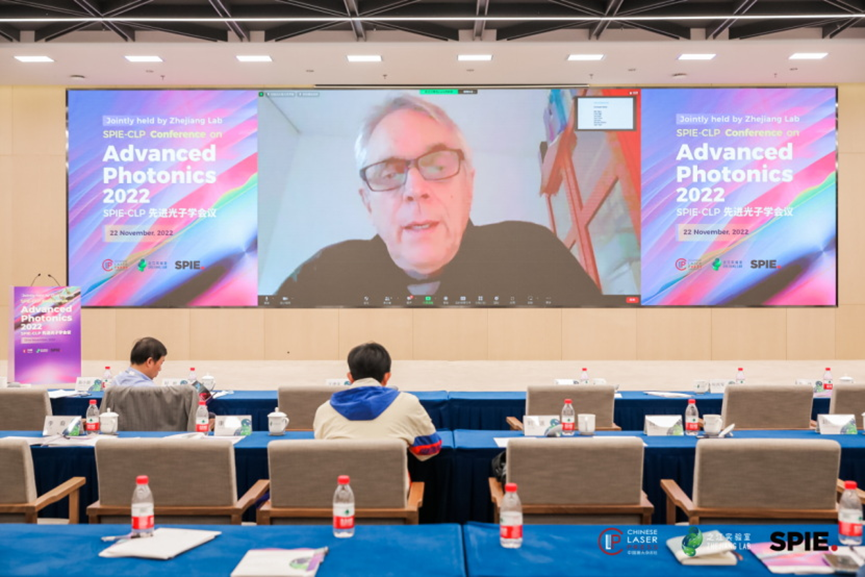
In his presentation, Prof. PSALTIS gave a comprehensive review of the history of all-optical neural networks and an outlook on their future development. In particular, he introduced the concept of Scalable Optical Learning Operator (SOLO). SOLO is one of the main research tasks of modern all-optical neural networks. SOLO is used to demonstrate the classification of lung radiographs, and the experimental results show that a well-trained all-optical neural network can successfully classify the input images, and its recognition rate of tissues such as cancerous lesions has reached over 80%, even surpassing the recognition rate of cancerous tissues by ordinary radiologists without the assistance of other examinations.
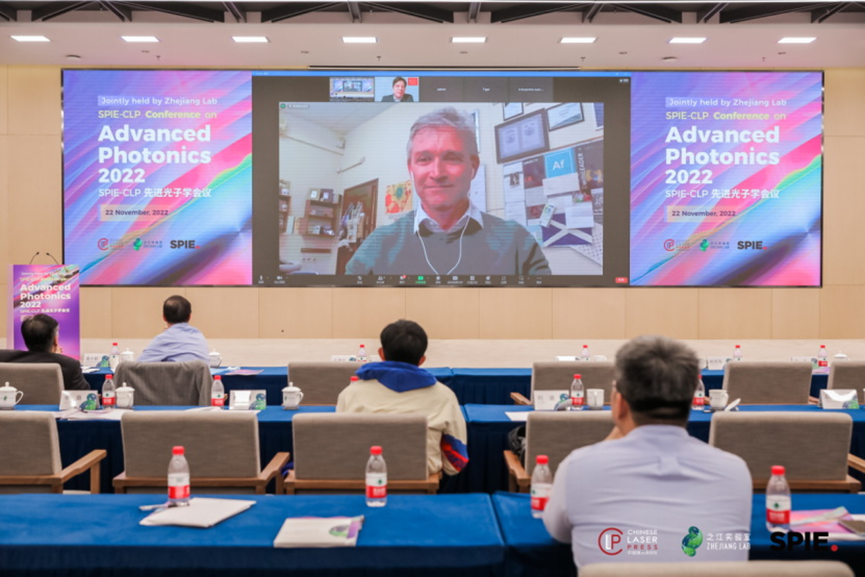
Prof. FORBES gave a keynote speech entitled "Advances in Structured Light Lasers". He pointed out that optical field modulation was an important tool for generating structured light fields, and how to in situ modulate the laser with a special wavefront structure in the laser resonant cavity was an important prerequisite for utilizing structured light fields. He introduced the method to obtain the spatially specific gain of a seed laser by modulating pumping intensity distribution, and in turn, generating light with a special wavefront structure, delved deep into the specific technical route for the specific gain of seed light with optical intensity, phase and polarization, and specified the various types of structured light fields generated by the said methods.
In addition to the exciting conference presentations, four major sessions and three workshops were set up simultaneously, where scholars in related fields shared nearly 120 invited reports and exchanged the latest research results with the participants in depth. The conference has effectively improved academic communication in the field of photonics. In the future, ZJ Lab will continue to plow deeper into the frontier of optics, further strengthen communication and cooperation, and gather the strength of many parties to achieve more breakthroughs.
